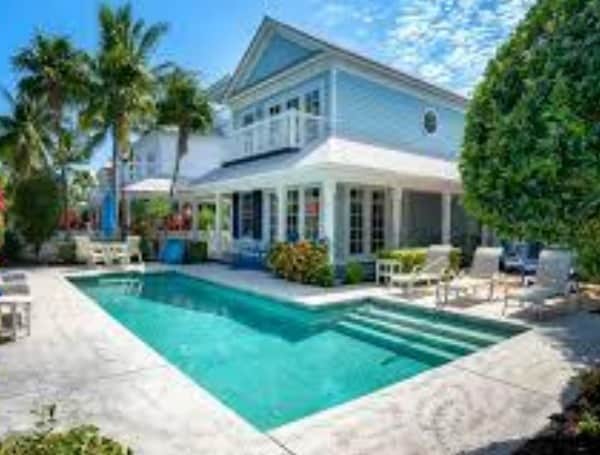The sale of and demand for vacation homes soared during the COVID-19 pandemic, according to a new study from the National Association of RealtorsÒ. T
The sale of and demand for vacation homes soared during the COVID-19 pandemic, according to a new study from the National Association of RealtorsÒ. The 2021 Vacation Home Counties Report finds that buyers flooded the real estate market in the second half of 2020 and through April 2021, causing vacation home purchases to rise expeditiously.
In 2020, the share of vacation home sales to total existing-home sales increased to 5.5% (5% in 2019). Vacation home sales rose by 16.4%, outpacing the overall growth in existing-home sales of 5.6%. From January to April 2021, the share of vacation home sales to total existing-home sales rose to 6.7%. Vacation home sales jumped 57.2% year-over-year compared to the 20% year-over-year growth in total existing-home sales.
“Vacation homes are a hot commodity at the moment,” said Lawrence Yun, NAR’s chief economist. “With many businesses and employers still extending an option to work remotely to workers, vacation housing and second homes will remain a popular choice among buyers.”
Areas where vacant seasonal, occasional or recreational-use housing account for at least 20% of homes – identified as vacation home counties by NAR – saw sales climb at a rate higher than the overall market during this period. Existing-home sales from 1,060 non-vacation home counties increased by an average of 11.2%, while the 145 vacation home counties recorded a jump of 24.2% from the prior year.
According to the NAR report, median existing-home sale prices in vacation counties also grew faster than in the rest of the country, increasing 14.2% compared to 10.1% in non-vacation home counties.
Properties in vacation home counties, however, did typically remain on the market longer in 2020 than those in other areas (59 days compared to 30 days). Nevertheless, homes largely sold at a faster pace in vacation home counties compared to the prior year by 13 days, versus just eight days in non-vacation home counties. Overall, the median number of net movers into vacation home counties increased from 78,114 in 2019 to 98,279 in 2020.
“The enduring opportunity for remote work will continue to raise the already high demand for property in these counties, particularly in those counties with reliable broadband internet service,” Yun said.
The report found the top 10 counties are: Lee County, Florida; Oscoda County, Michigan; Swain County, North Carolina; Collier County, Florida; Dukes County, Massachusetts; Alleghany County, North Carolina; Garrett County, Maryland; Barnstable County, Massachusetts; Alcona County, Michigan; and Macon County, North Carolina.
The top 1% of vacation home counties in NAR’s report are concentrated in 16 states. North Carolina had four vacation counties: Swain, Alleghany, Macon and Watauga; while Massachusetts (Dukes, Barnstable and Nantucket); Michigan (Oscoda, Alcona and Clare); New York (Greene, Sullivan and Hamilton); and Vermont (Windham, Bennington and Windsor) each had three.
The remainder are located in Florida (Lee and Collier); Maryland (Garrett and Worcester); and Missouri (Hickory and Camden), with one each also in Arizona (Coconino); Delaware (Sussex); Georgia (Hancock); Maine (Oxford); Minnesota (Itasca); New Jersey (Cape May); New Mexico (Colfax); and Oklahoma (Delaware).
Among the nine U.S. divisions, the South Atlantic (comprised of Delaware, Florida, Georgia, Maryland, North Carolina, South Carolina, Virginia, West Virginia and the District of Columbia) witnessed the strongest sales growth, with home sales up nearly 31% in 2020 in the vacation home counties.
The second highest sales growth was in the Middle Atlantic division (New Jersey, New York and Pennsylvania), with home sales typically up 27.8% in 2020 in the vacation home counties.
Third in line was the West South Central division (Arkansas, Louisiana, Oklahoma and Texas) where sales typically increased by 25.7% in 2020 in the vacation home counties.
In the New England division (Connecticut, Maine, Massachusetts, New Hampshire, Rhode Island, and Vermont), sales generally climbed 25.3% in 2020 in the vacation home counties.
In the midst of an ongoing supply shortage, Yun notes an increase in the number of buyers willing to pay for homes in all cash.
The NAR report revealed that those who buy vacation homes are more likely to do an all-cash transaction at closing. From January through the end of April 2021, all-cash sales increased to 53% of all vacation home purchases, up from under 50% in past years. In comparison, 22% of all existing-home sales over the same period were all-cash sales.
“RealtorsÒ all over the country have indicated that buyers in a position to pay in all cash are doing just that,” said Yun. “From a seller’s perspective, paying in this manner makes for a much more attractive offer given the strong demand right now for vacation homes.
The National Association of RealtorsÒ is America’s largest trade association, representing more than 1.4 million members involved in all aspects of the residential and commercial real estate industries.
Android Users, Click Here To Download The Free Press App And Never Miss A Story. It’s Free And Coming To Apple Users Soon.
Support journalism by clicking here to our gofundme or sign up for our free newsletter by clicking here

COMMENTS